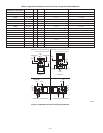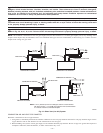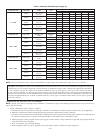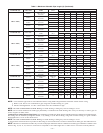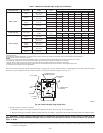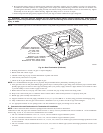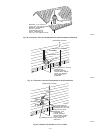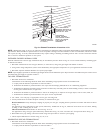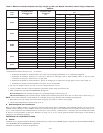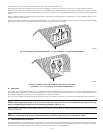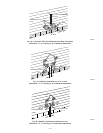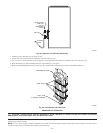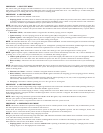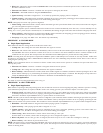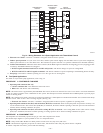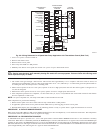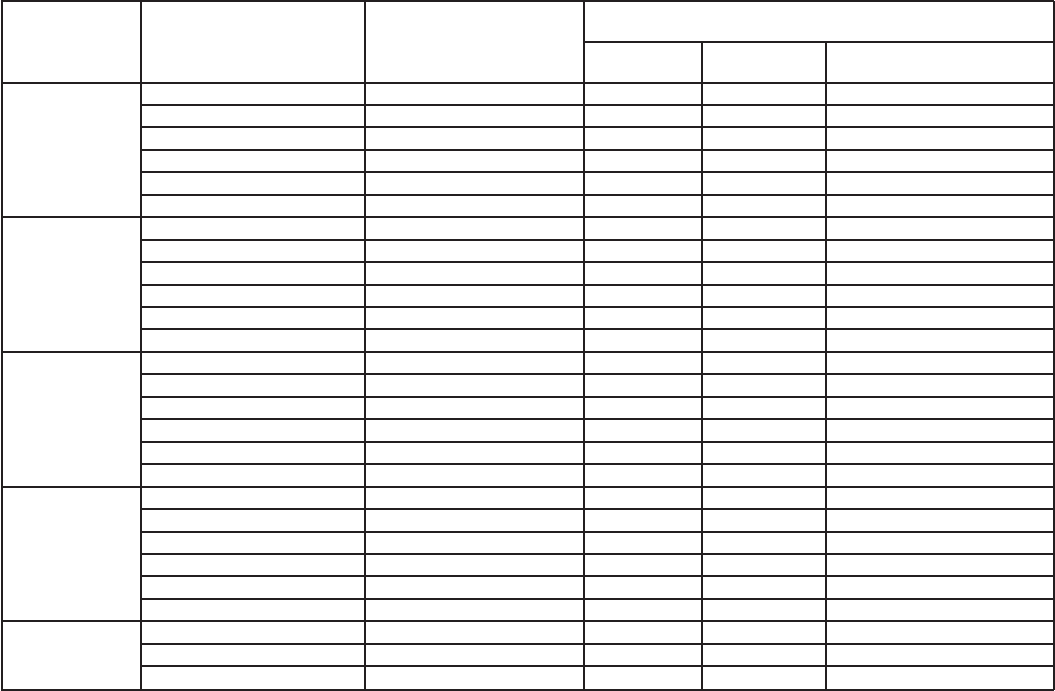
b. Termination kit should be positioned where vent vapors will not damage plants/shrubs or air conditioning equipment.
c. Termination kit should be positioned so it will not be affected by wind eddy (such as inside building comers) or that may allow
recirculation of flue gases, airborne leaves, or light snow.
d. Termination kit should be positioned where it will not be damaged by or subjected to foreign objects, such as stones, balls, etc.
e. Termination kit should be positioned where vent vapors are not objectionable.
2. Cut one 4-in. diameter hole for 2-in. kit, or one 5-in. diameter hole for 3-in. kit.
3. Loosely assemble concentric vent/air termination components together using instructions in kit.
4. Slide assembled kit with rain shield REMOVED through hole.
Roof terminations-Locate assembly through roof to appropriate height as shown in Fig. 40.
Sidewall terminations-Locate assembly through sidewall with rain shield positioned no more than 1-in. from wall as shown in Fig. 41.
NOTE: Do not allow insulation or other materials to accumulate inside of pipe assembly when installing it through hole.
5. Disassemble loose pipe fittings. Clean and cement using same procedures as used for system piping.
6. Check required dimensions as shown in Fig. 40 or 41.
D. Multiventing and Vent Terminations
When 2 or more 355MAV furnaces are vented near each other, each furnace must be individually vented. NEVER common vent or breach vent
355MAV furnaces. When 2 or more 355MAV furnaces are vented near each other, 2 vent terminations may be installed as shown in Fig. 44, 45,
46, 47, or 48, but the next vent termination must be at least 36 in. away from first 2 terminations. It is important that vent terminations be made
as shown to avoid recirculation of flue gases. Dimension A in Fig. 44, 45, 46, 47, and 48 represents distance between pipes or rain shields, as
touching or 2-in. maximum separation.
PROCEDURE 10—CONDENSATE DRAIN
A. General
Condensate trap is shipped installed in the blower shelf and factory connected for UPFLOW applies Condensate trap must be RELOCATED for
use in DOWNFLOW and HORIZONTAL applications.
Condensate trap MUST be used for all applications.
Table 8—Maximum Allowable Exposed Vent Pipe Length (ft) With and Without Insulationin Winter Design Temperature
Ambient*
UNIT
SIZE
WINTER DESIGN
TEMPERATURE
(°F)
MAXIMUM PIPE
DIAMETER
(IN.)
INSTALLATION THICKNESS
(IN.)
0 3/8
1/2 or THICKER
INSTALLATION†
042040
20 2 30 70 70
0 2 12 53 64
-20 2 2 36 45
20 1-1/2 34 50 50
0 1-1/2 17 50 50
-20 1-1/2 8 46 50
042060
20 2 44 70 70
0 2 21 70 70
-20 2 9 57 69
20 1-1/2 50 70 70
0 1-1/2 27 70 70
-20 1-1/2 16 70 70
042080
060080
20 2 57 70 70
0 2 30 70 70
-20 2 16 70 70
20 1-1/2 64 70 70
0 1-1/2 37 70 70
-20 1-1/2 23 70 70
060100
20 2-1/2 70 70 70
0 2-1/2 38 70 70
-20 2-1/2 21 70 70
20 2 70 70 70
0 2 38 70 70
-20 2 23 70 70
060120
20 3 70 70 70
0 3 38 70 70
-20 3 19 70 70
* Pipe length (ft) specified for maximum pipe lengths located in unconditioned spaces. Pipes located in unconditioned space cannot exceed total allowable pipe length as
specified in Table 8.
† Insulation thickness based on R value of 3.5 (ft_ • °F• hr)/(Btu•in.)
—40—



